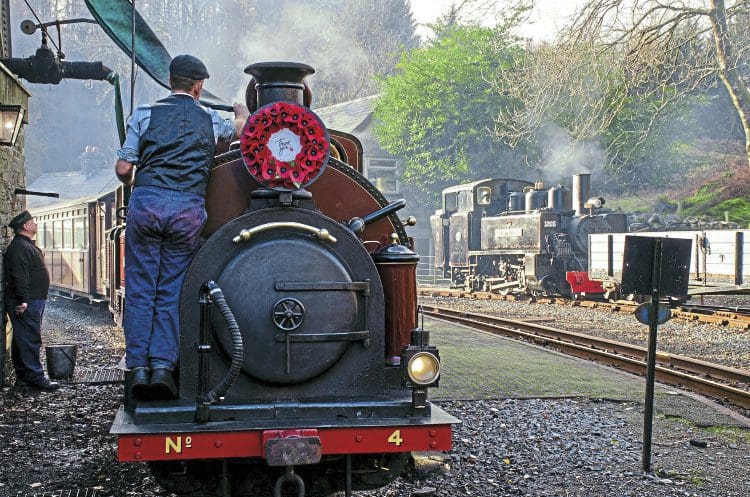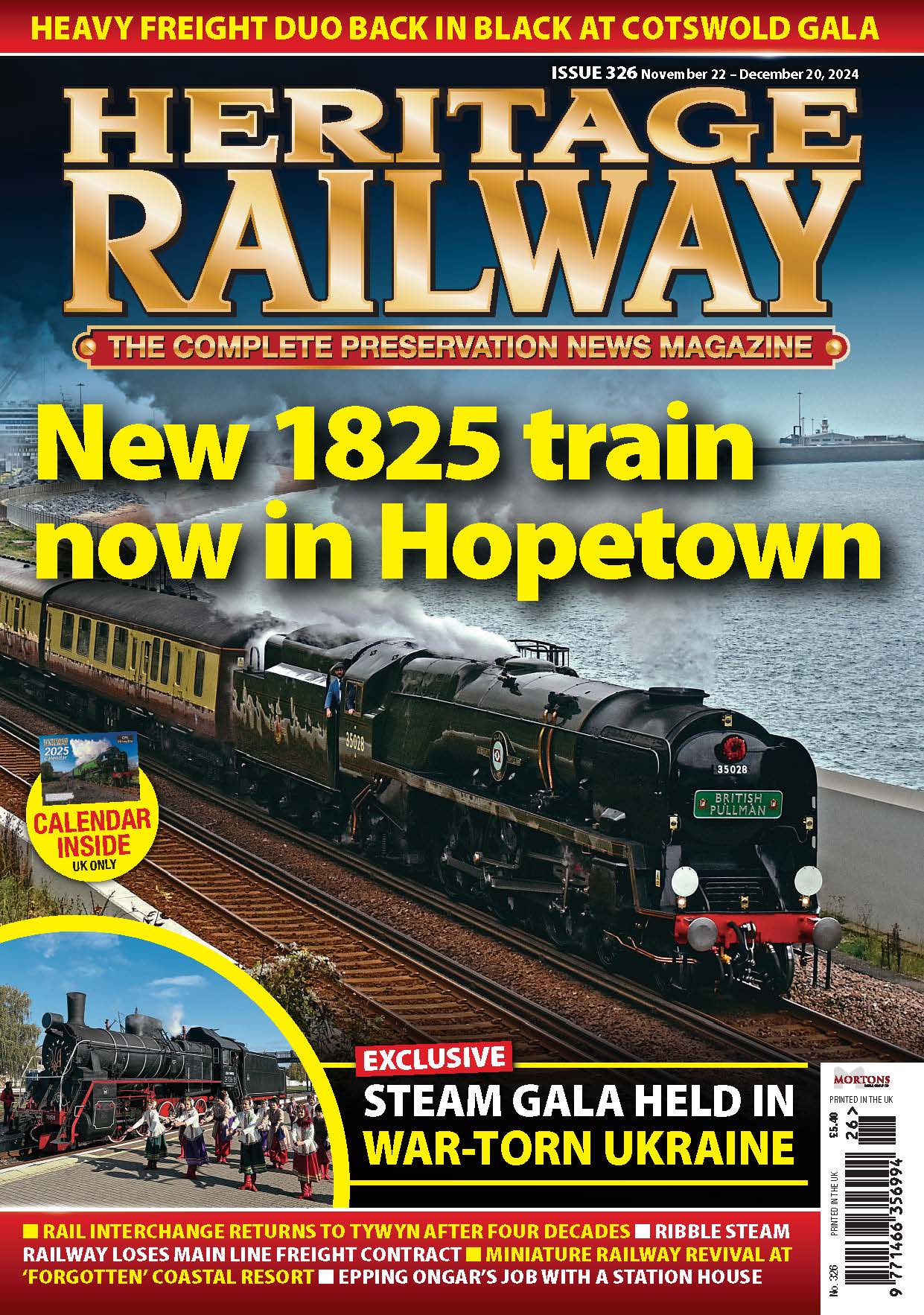Gareth Evans reports on how the heritage railway sector marked the centenary of the end of the First World War.
The UK’s railway heritage sector marked the centenary of the Armistice in a variety of ways. World War One began on July 28, 1914 – the calamitous conflict ended four years, three months and 14 days later on November 11, 1918.
Railways played a pivotal role of course – supplying men, munitions and machinery. It was therefore appropriate that our heritage lines paid their respects to all who served their country, 100 years on.
Enjoy more Heritage Railway reading in the four-weekly magazine.
Click here to subscribe & save.
Apedale
The Apedale Valley Light Railway in Newcastle-under-Lyme extended its running season by an additional weekend to mark the centenary of the end of the First World War.
On November 10 and 11, three locomotives dating from the time of the First World War were in operation at the Potteries line – the Hudswell Clarke 0-6-0WT (No. 238 of 1916), Joffre 0-6-0T (No. 3014 of 1917) and Hunslet 4-6-0T No. 303 (No. 1215 of 1916) – along with the Great War-era internal combustion locos in the collection.

These locomotives were in use on the passenger train and also hauling trains of appropriate wagons on both the main line and the Field Railway.
The reproduction trench was also open for visits.
Phil Robinson, chairman of the Moseley Railway Trust, which operates the line said: “Remembrance Sunday was a particularly poignant occasion. We observed the two-minute silence, which ended with a chorus of whistles. The Last Post was also played.”
The friendly 2ft gauge line is home to a rich collection of authentic First World War rolling stock and held its Tracks to the Trenches event in July, sponsored by Heritage Railway and its sister title, The Railway Magazine.
Cambrian
Four hundred employees of the Cambrian Railways Company left to fight in the Great War, with 54 not returning. The firm’s operating territory covered swathes of Mid and North Wales, plus north Shropshire – and it was headquartered in Oswestry, in the building which is today used by Cambrian Heritage Railways.

Over the past four years, CHR has housed an exhibition in the former booking officeat the station, the centenary of each of the deaths being remembered by the lightingof a lamp and the laying of a ceramicpoppy.
The public and CHR members, along with some relatives of those named on the memorial, crowded the exhibition area for the final ceremony on November 11, as the final four casualties were remembered. A lamp was lit, poppies were laid and Wilfred Owen’s poem, the Send Off, which described young soldiers leaving for war by train, was read out.
Owen’s father had briefly worked in the Cambrian offices as a young man, before serving on the Indian railways. He later returned to the town to marry and carry on his railway career in Birkenhead and Shrewsbury.
Read more and view more images in Issue 249 of HR – on sale now!
Advert
 Enjoy more Heritage Railway reading in the four-weekly magazine. Click here to subscribe.
Enjoy more Heritage Railway reading in the four-weekly magazine. Click here to subscribe.




